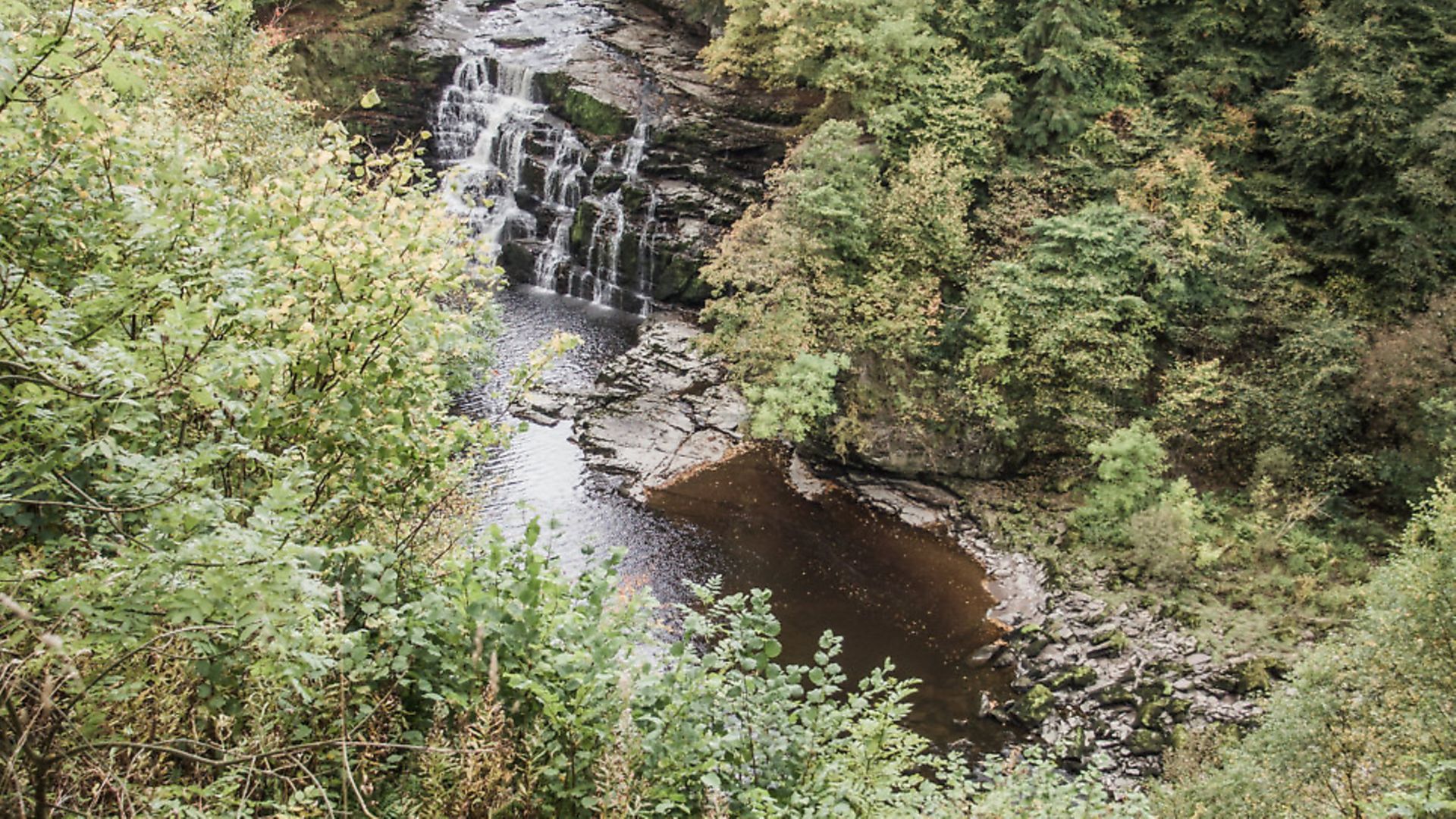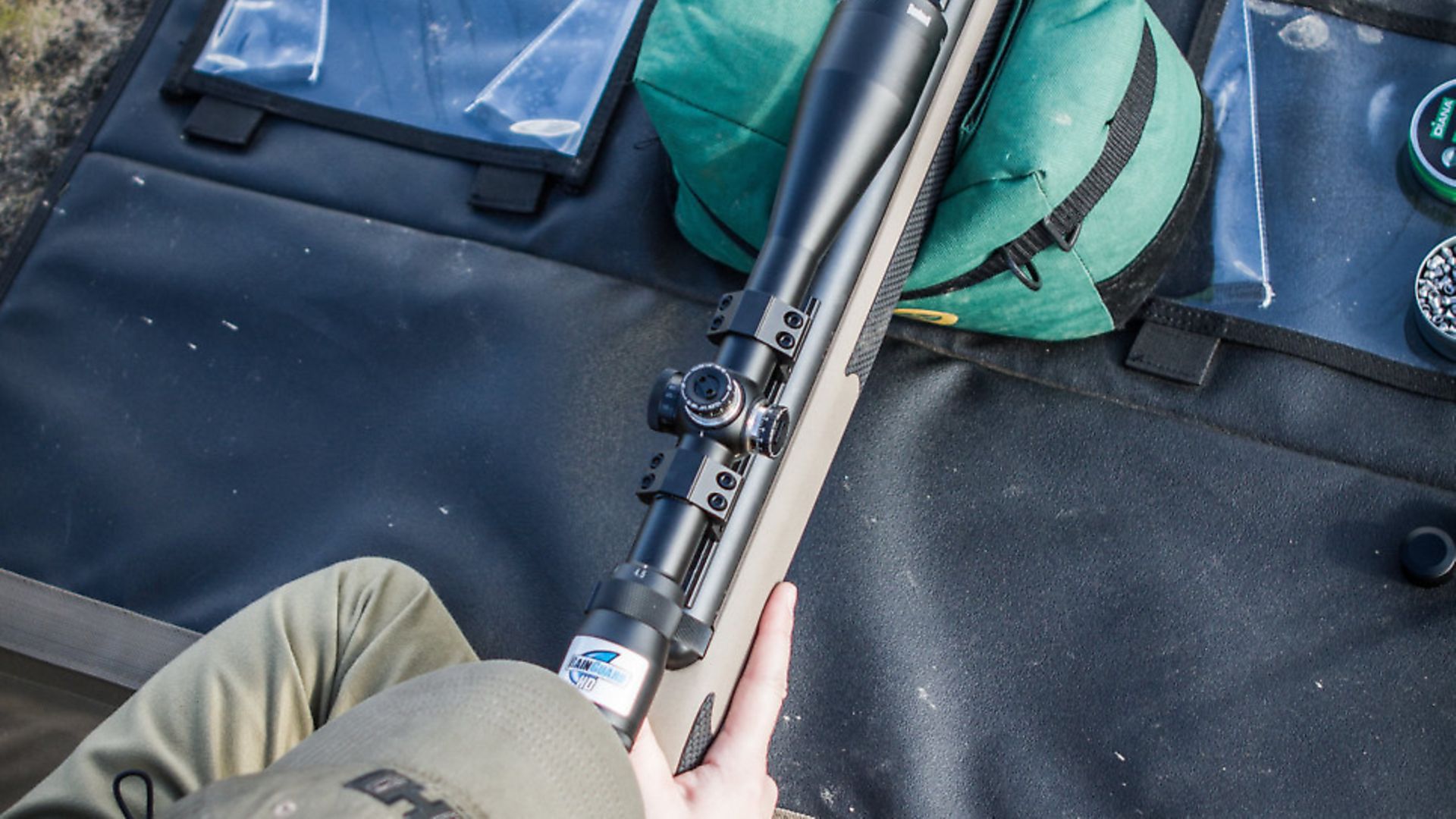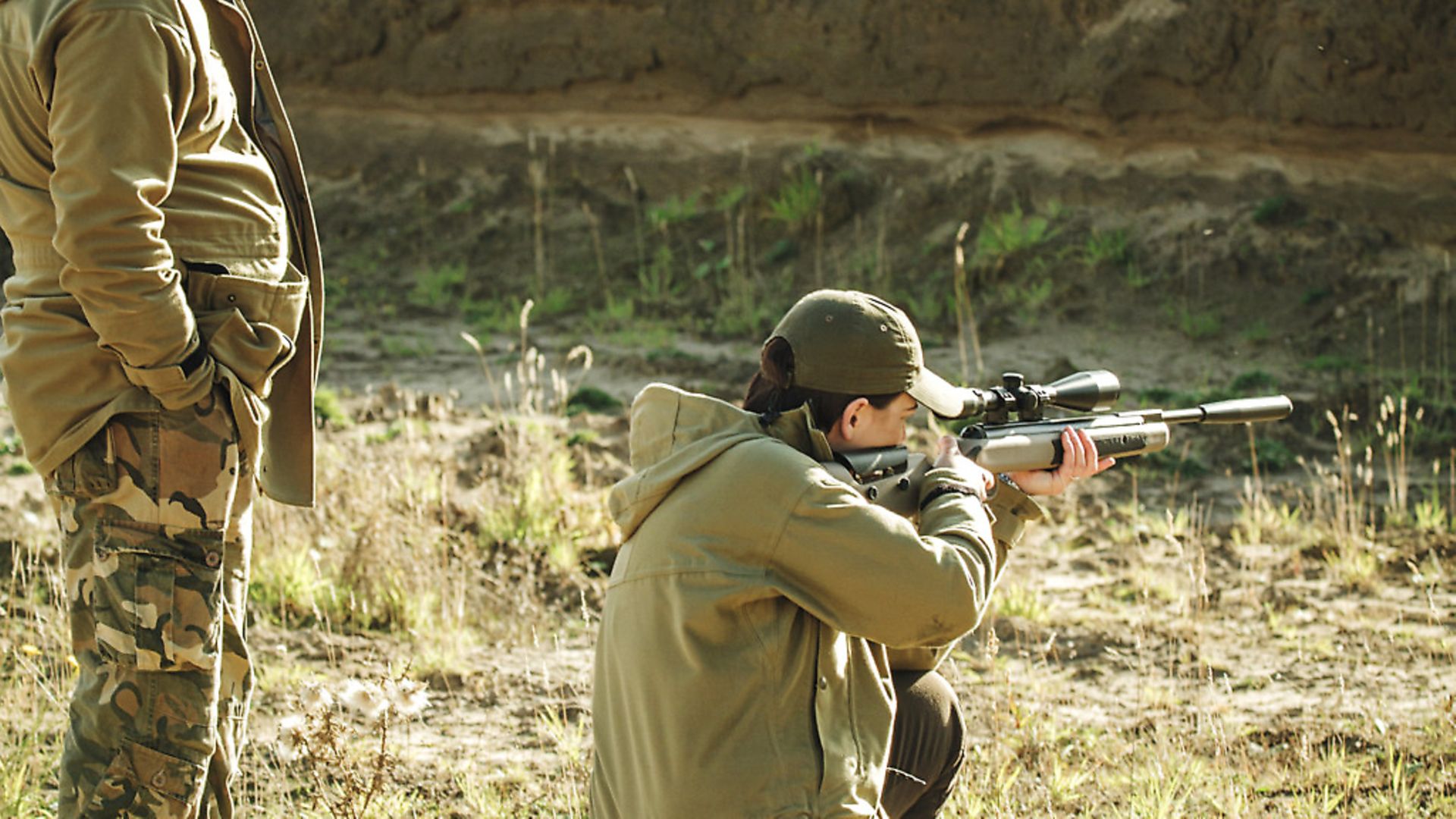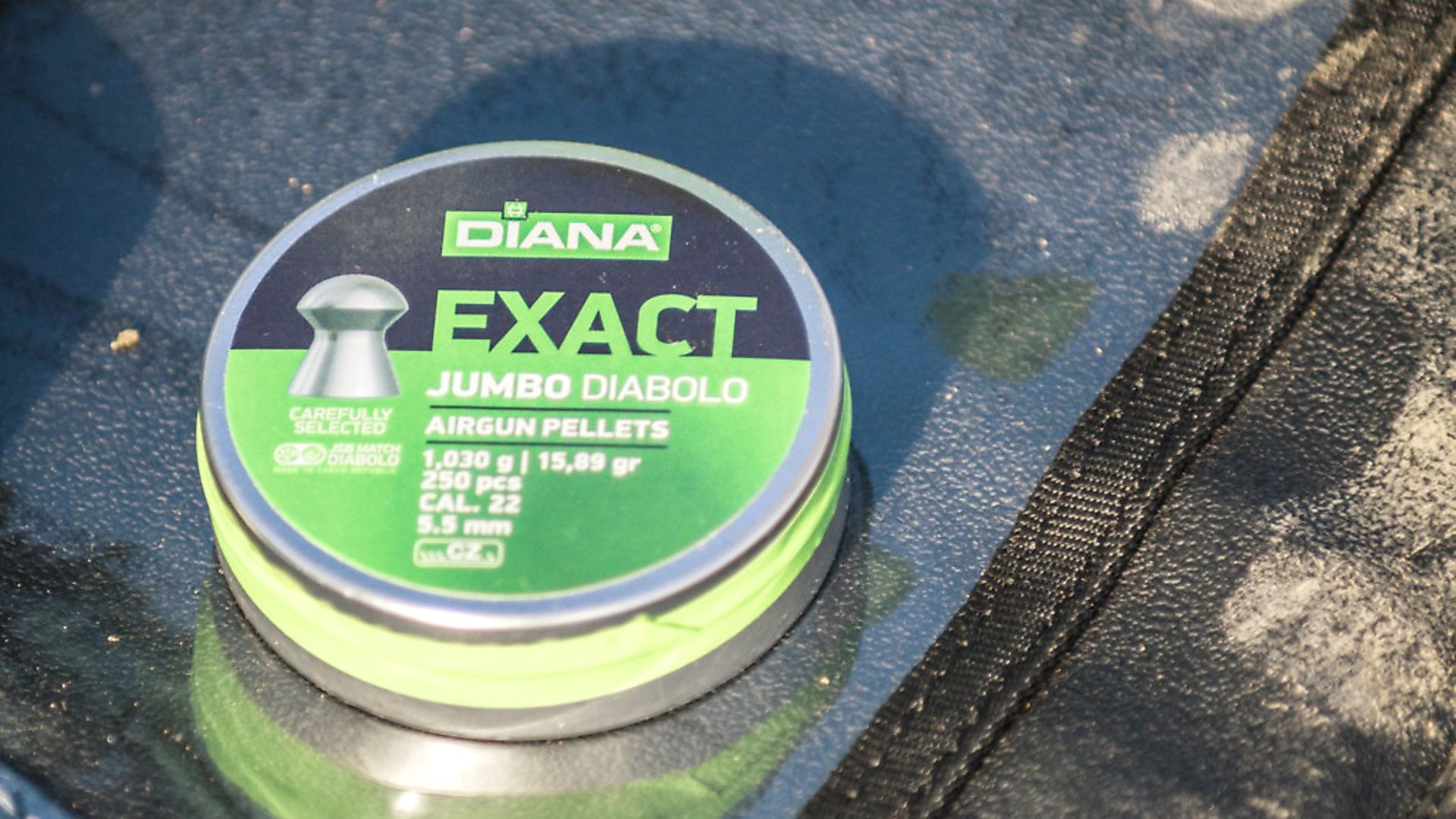A break-barrel springer for squirrel hunting? Liz Edgar shows the way
 credit: Archant
credit: Archant
Grey squirrels are renowned for the threat they pose to our native reds, but they also have a major impact on trees. One late September afternoon I found myself travelling north-east to Lanarkshire, in Scotland’s central lowlands, with my air rifle and high hopes of catching up with some greys. It was that time of year when you could see the seasons changing from summer to autumn, signalled by a chill in the air, the turning leaves and that distinct smell of lingering chimney smoke.
Dougie Johnstone, a plant worker who I met last winter through my deer stalking syndicate in Perthshire, had been in touch a few weeks prior, saying that he was having bother with three or four grey squirrels around his home; they were raiding his garage and chewing holes in bins. As a keen air rifle shot, he asked me if I wouldn’t mind coming along to help tackle the problem, so of course I said yes.
 credit: Archant
credit: Archant
Video evidence
We pulled into the farm and passed through a beautiful, mature tree-lined grove, like the driveway up to a French chateau. On arrival at his country cottage, surrounded by fields and woods, we stopped for a quick coffee, which gave Dougie an opportunity to show me some of his trail cam videos, and photos of the grey squirrels in action. I could see the brazen rodents buzzing around on top of his chicken sheds and sneaking into his garage. The problem had reached the extent where Dougie ended up replacing a plastic food bin in his garage with a metal one, to stop the squirrels chewing through his feed bins. Not only that, but the squirrels had also worked their way through the lid of his wheelie bin, which I’m sure you’ll agree is no mean feat. We were up against some tough opponents.
 credit: Archant
credit: Archant
Damage
Dougie’s cottage sits atop a valley surrounded by numerous deciduous woodland blocks, with Tinto Hill in the background and the River Clyde and the Scottish Wildlife Trust, Falls of Clyde reserve, in the foreground.
The reserve is famous for its spectacular waterfalls and scenic woodland walks. After discussing the problem with the reserve ranger, it transpired that they were also having issues with this non-native species, mainly through the greys’ habit of stripping bark on their beech and larch trees. The ranger explained that from late spring to early summer, grey squirrels gnaw the stem of trees to reach sweet, sap-filled layers beneath the bark, sometimes gnawing a ring around the tree, causing branches to die, or restricting the trees’ growth, the most vulnerable trees being sycamore, beech, oak, sweet chestnut, pine, larch and Norway spruce.
To see the damage for ourselves, we wandered down to the reserve where Dougie pointed out some recent destruction indicated by the brighter ginger colour on the branches, and what looked to be older damage from the year before, with gnaw marks distinctly engrained. During our walk, we saw no trace of the squirrels, but the evidence was clearly there, indicated by empty acorns hulls lining the footpaths.
 credit: Archant
credit: Archant
Accuracy check
The invasive squirrels have been an on-going issue for Dougie since he moved into the house five years ago. Last year alone, he shot 30 squirrels – and 12 in one day. Now that we knew what we were up against, we made tracks to a nearby sand and gravel quarry, to check the zero of the air rifle. The quarry provided the perfect setting for checking the zero of my new Diana Mauser AM03 .22 break-barrel, because the sloping sides of the quarry provided not only the perfect backdrop, but also good shelter from any wind.
After a thorough familiarisation session, we packed up the gear and made our way to nearby woods, which surrounded the house. In the first wood, through our binoculars we spied only one rebellious squirrel 150 yards away, squirreling away some acorns below oak trees.
Unfortunately, it was too far away to shoot and before we could get within a sensible distance, it disappeared, not before alerting the other squirrels of our presence with its cry – an eerie sound with which Dougie was all too familiar when coming from his garage.
Through the wood
The next wood we visited was the one where Dougie had set up his trail cam. I recognised it immediately from the videos he’d showed me earlier. Before our visit, Dougie had laid out some nuts in front of the camera to monitor how many squirrels visited regularly, and he spied quite a few. We crept quietly through the wood and it wasn’t long before we had our first chance. We watched as a grey squirrel on the ground darted up the tree, stopping momentarily on a branch. Slowly and deliberately, I used the nearest tree as a rest and, cushioning the rifle on my hand so it could recoil freely, carefully took my shot. I knew the target range, the required aimpoint and the capabilities of my air rifle, and that vital formula put the first squirrel in the bag.
We moved quietly and carefully through the wood, scanning the ground and trees ahead with our binoculars, and managed to claim three more greys, as the Diana proved beyond doubt what a handy break-barrel sporter can do in the hunting field.
Always learning
We decided that was enough of shooting in the woods and headed back to the cottage to see if any squirrels had reappeared around the house and garden, but after patiently waiting for an hour and with the light fading, we called it a day.
I came away from the hunt having learned quite a lot more about the damage and impact such a small animal can have on the environment and just how effective we, as airgun hunters, can be in correcting the imbalance of greys over our native red squirrels. To take part in that lesson surrounded by such stunning scenery was a huge bonus and one that I hope to be enjoying again as soon as possible.
After ways to cook your caught squirrel? See these recipes here...
Squirrel Jambalaya
Squirrel pizza